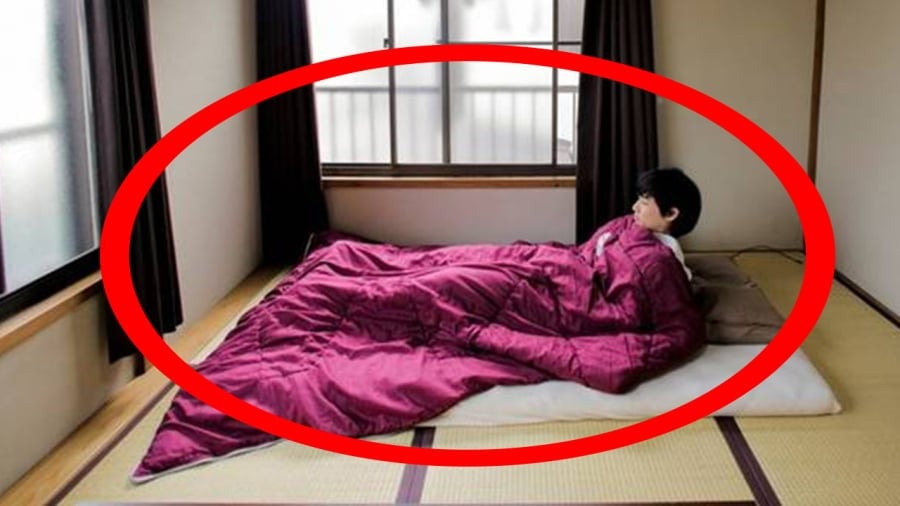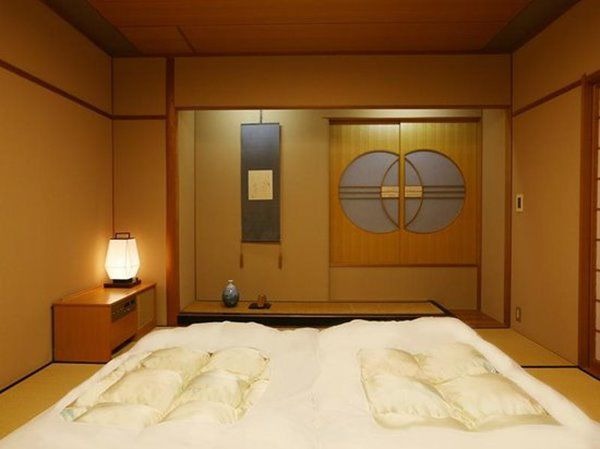Everybody loves a good night’s sleep in bed, but the Japanese have a different habit. Even though they have spacious and comfortable houses, they still prefer to sleep on the floor. So why is that?
Maximizing Living Space
In Japanese culture, tatami mats are common in most households, serving a variety of flexible purposes. Not only do they function as regular floor mats, but tatami mats can also be used as seating areas or sleeping quarters when needed.
With the smaller room sizes in Japanese homes, using tatami mats for sleeping is a way to optimize living space and save room. In addition, most Japanese homes have built-in heating systems, providing warmth during the winter months.

With the smaller room sizes in Japanese homes, using tatami mats for sleeping is a way to optimize living space and save room.
Ensuring Child Safety
The Japanese believe that sleeping on the floor is safer for young children, minimizing the risk of falling out of bed or against the bed frame while sleeping. The comfort and freedom of movement that comes with sleeping on the floor also allows children to roll around and crawl about without much risk.
Fear of Natural Disasters
Japan is prone to frequent earthquakes, so being able to sense and react quickly is essential. By sleeping on the floor, Japanese people are able to feel the tremors of an earthquake to a greater extent and can more easily navigate their way to safety. In addition, keeping minimal furniture in the home also helps them to move around quickly when necessary.
Health Benefits
The Japanese believe that sleeping on a bed that is too soft can be detrimental to your bones and joints. Instead, they favor beds with a medium level of firmness, neither too hard nor too soft. According to them, sleeping on a flat, hard surface is better for your back and helps to improve blood circulation as your weight is more evenly distributed, putting less strain on different parts of your body.

The Japanese believe that sleeping on a bed that is too soft can be detrimental to your bones and joints.
In contrast, sleeping on a soft mattress, while comfortable, can cause the mattress to sag over time, misaligning the spine and causing back pain. This also helps to reduce the risk of falls as seniors try to move from their bed to the floor.
Additionally, the Japanese do not usually sleep directly on the wooden floor, but instead use tatami mats or mattresses. Tatami mats are made of tightly woven dried straw, providing resilience and comfort. At the same time, mattresses in Japan tend to be on the thinner side, with pillows that are also smaller in size and filled with beans, benefiting the neck.
Easier to Get Up
Another reason why the Japanese prefer to sleep on the floor instead of a bed is that it is easier to get up. Often, the comfort of a bed and mattress can make it difficult to get up in the morning. In contrast, sleeping on the floor promotes better quality sleep, making it easier to wake up each morning without feeling the need to linger in bed.
Cultural Tradition
Another reason is that cultural tradition has led the Japanese to favor sleeping on the floor for thousands of years. This habit has been passed down from generation to generation in Japanese society.
Sleeping on the floor has been a preferred practice in Japan for thousands of years due to cultural traditions. This habit has been passed down through generations and is deeply rooted in Japanese society.
The Japanese believe that sleeping on a bed that is too soft can be detrimental to bone and joint health. They favor beds with medium firmness to support spinal alignment and improve blood circulation. Sleeping on a flat, hard surface like a tatami mat or thin mattress promotes a better sleeping posture and reduces the risk of back pain.
Sleeping on the floor promotes better quality sleep, making it easier to wake up each morning. The firmness of the floor or a thin mattress reduces the comfort that may tempt one to linger in bed, encouraging a more refreshed feeling upon waking up.
Japan experiences frequent earthquakes, and sleeping on the floor allows individuals to sense tremors more effectively and navigate to safety quickly. Additionally, minimal furniture in Japanese homes further aids in swift movement during natural disasters.



































